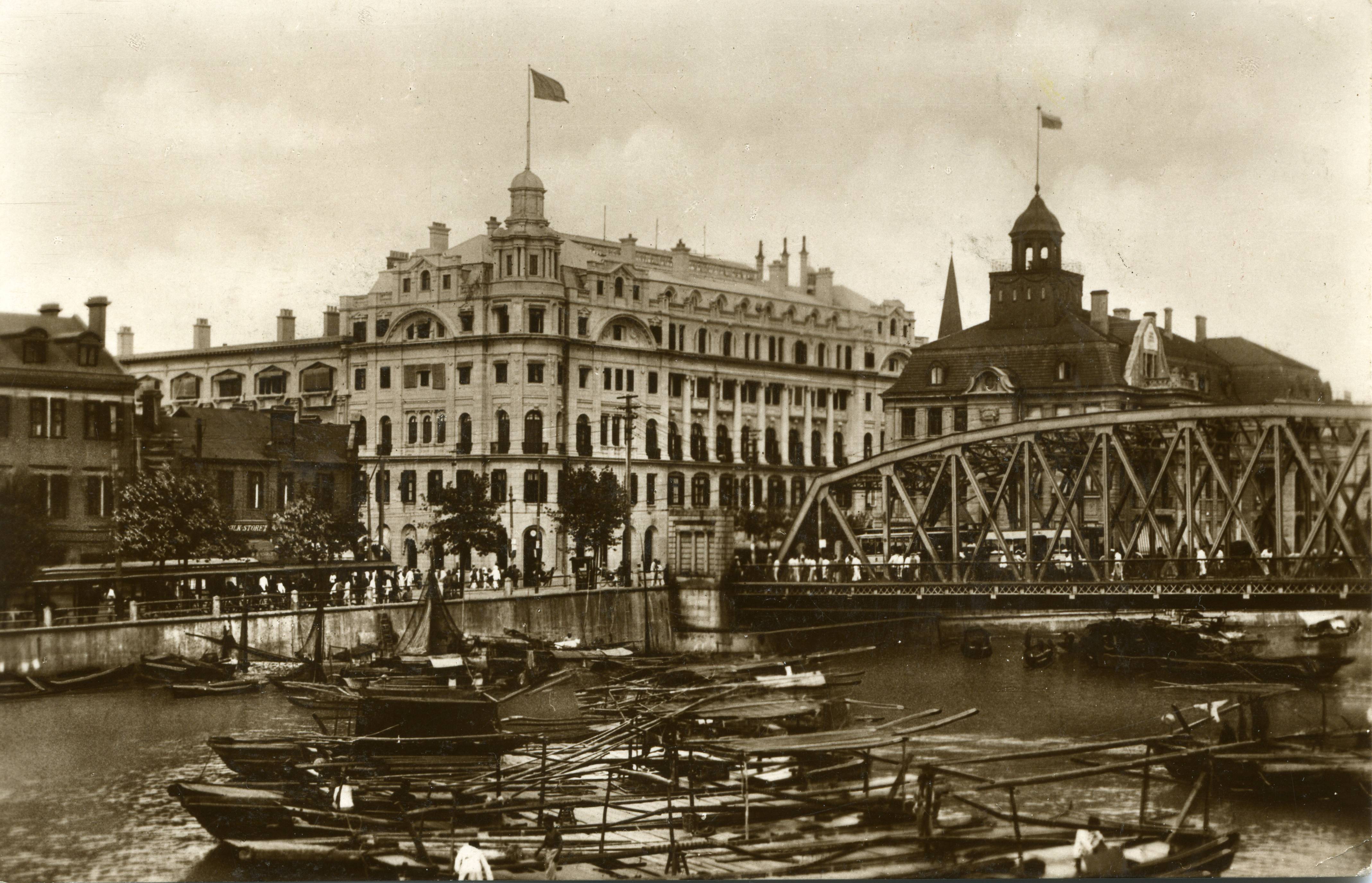Now go outside and look at the sky.
Astor House: Setting The Scene Along Suzhou Creek
As mentioned in the introduction to this series, there are hundreds of photos to choose from, so it was a bit of a struggle to pick one for the first post. This one gives a great overview of the area and I will use it to set the scene that we will revisit over the coming series of photos.
This is the Astor House Hotel in Shanghai just past its peak in popularity, after one last major renovation in late 1923, so this is most likely in 1924 or 1925. Over the years, the stone facade changed dramatically in color and grime — useful clues when trying to date old photographs like this one.
Reportedly, the west facade will be pocked with machine gun bullets only eight years later in 1932... we will get to more about that in future installments.
Since this is the first post of the series, let's describe the location in a little more detail. The waterway in the foreground is Suzhou Creek at its very mouth where it joins the Pujiang, which is the main river that snakes its way through Shanghai.
Suzhou Creek is a very busy waterway, delivering coal and raw materials upstream to factories and workshops, and goods of all sorts down to the docks along the Pujiang. Access is limited however by the steel girders of the Garden Bridge, which at high tide only allows for about three meters of clearance.
Dominating the foreground, the Garden Bridge, built in 1908, will appear in many of the photos we are going to see here. It was the first steel bridge of its kind in China and spans Suzhou Creek with over 100 meters of roadway, tram rails and sidewalks. Two crowded street cars can be seen passing each other on the bridge.
Next to the bridge along the shore of the creek is the Russian Consulate which was built in 1917 - this will also help us to date many upcoming photos. Before the consulate was built, this area was a garden that was part of the Astor House property.
The Astor House itself looks freshly cleaned and the stone facade had its previous red and white paint removed, maybe to match the changing tastes of the Art Deco period.
Through the girders of the Garden Bridge we get a tiny glimpse of the new cantilevered canopy over the main entrance which can be seen here on the wikipedia page.
The north end of the Garden Bridge leads into Seward Road which splits into Broadway just north of the Astor House. We will see several views of these roads in the coming posts.
Behind the Astor House we see the sharp pointy spire of the German Church (Deutsche Evangelische Kirche). There are only a few photos of this church and it doesn't seem to survive the 1930s, but we will see its spire regularly in these photos.
All the way on the left in the photo, at the southwest corner of Seward Road and across the street from the Astor House, is a row of stores with prominent signage that we can identify from several postcards and photos.
At the corner is the Mactavish and Lehmann Dispensary and next to it - recognizable in this photo - is a silk store. These stores will be gone by 1934 as this is the future site of the distinctive Broadway Mansions.
This was a lot of detail to cover, but I hope it helps to set the scene - we'll revisit many of these places again and my plan is to focus on individual features for most of the future posts in this series.
